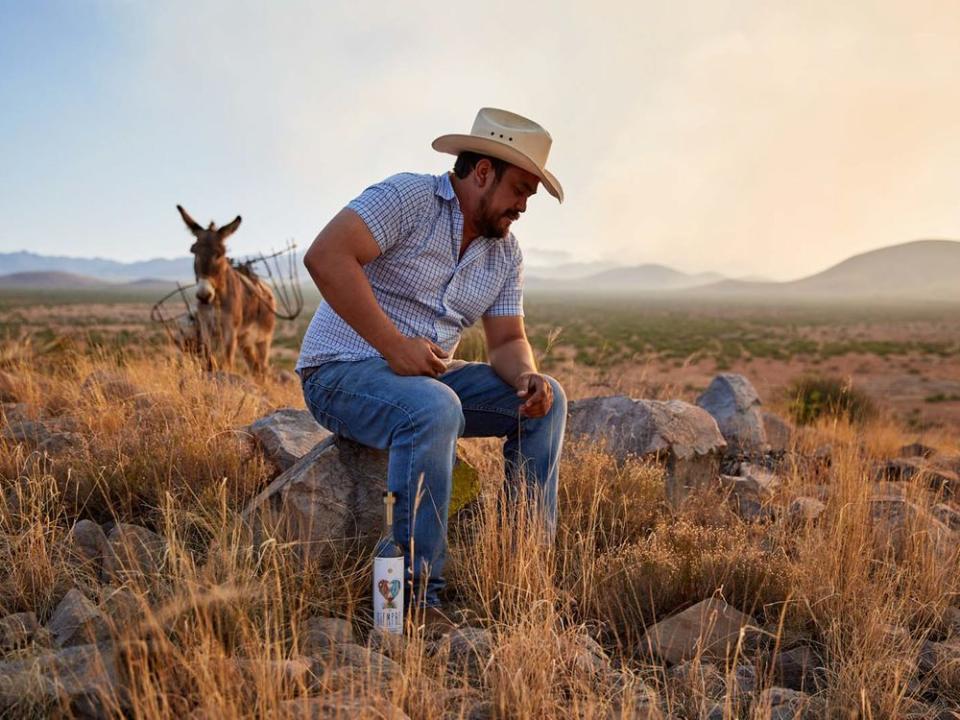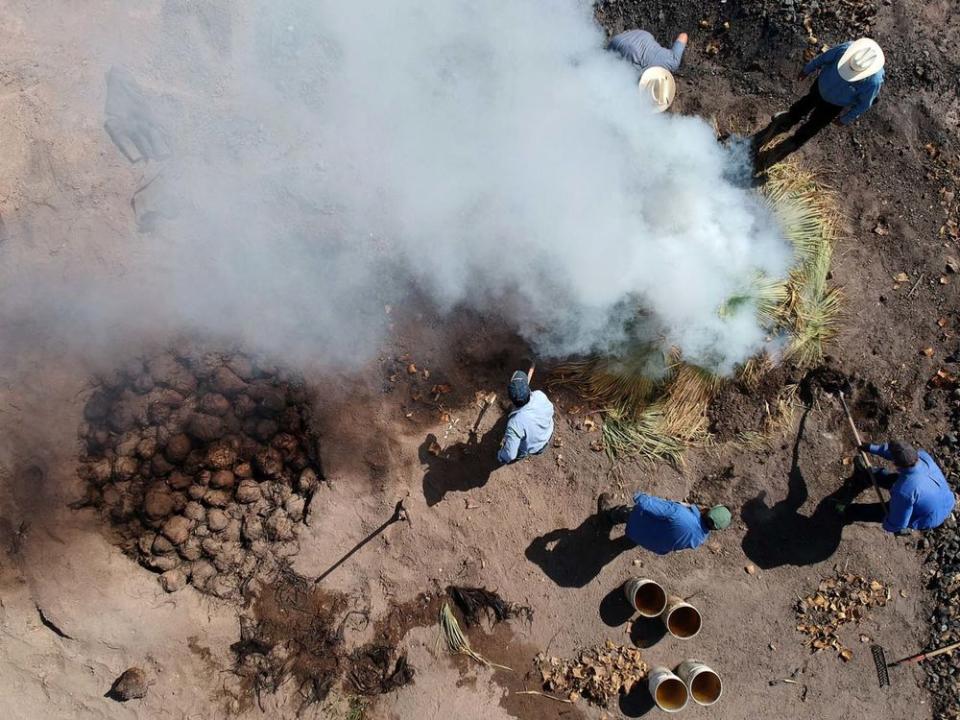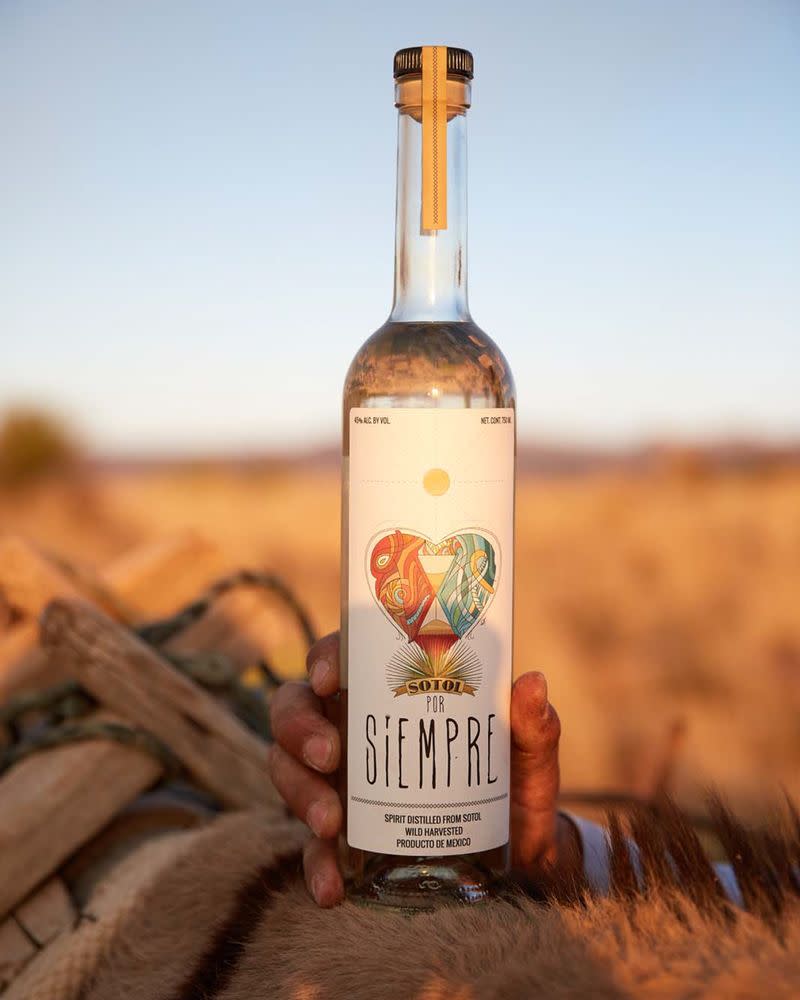All About Sotol, Northern Mexico’s Answer to Mezcal
At Sotol Don Celso in Janos, Chihuahua, sixth-generation sotolero Jacob Jaquez opens a horno, an underground oven lined with volcanic rock. Inside, four tons of a desert plant called Dasylirion leiophyllum have been slowly roasting with pine and oak for the better part of a week. He breathes in the rich, smoky aroma of earth, dark chocolate, and sweet potato.
“It’s like when you make yourself a ribeye,” Jaquez says. “You cook it outside, on the grill. And you can tell the difference between when you use a gas or charcoal grill.”

Mexico’s distilling traditions have always been about so much more than tequila. But only now, on the heels of mezcal’s continued popularity, can American drinkers reliably track down bottles of Mexico’s more esoteric spirits. Sotol, the traditional spirit of Northern Mexico’s arid Chihuahuan Desert, is one of the latest to capture international attention.
Part of what makes sotol’s resurgence so exciting is the industry’s troubled history. For much of the 20th century, many sotoleros feared their livelihoods would disappear. That’s because authorities would destroy distilleries, called vinatas, and kill or arrest sotol producers under the guise of combating bootlegging during Prohibition.
“My family was persecuted by the government during Prohibition, and that’s one reason the tradition was almost lost,” Jacquez says. “But my passion really is sotol, and I want to help others enjoy it, too.”

What Is Sotol?
Sotol is often compared to mezcal. Both have a rich history of small-scale indigenous production and share a complex, herbaceous, and sometimes smoky character. But there’s an important difference. While Mezcal is made from agave, sotol is made from a related group of plants in the dasylirion genus, referred to as sotol in Spanish and desert spoon in English.
Like agave, dasylirion are round, spiky, and boast a dense inner core that can be roasted, fermented, and distilled. The plant has been used to make sotol in Northern Mexico for generations, and relied on for food, fiber, and a low-alcohol drink similar to pulque for centuries.
Sotol’s flavor runs the gamut from mildly salty, grassy sweetness, to full-on tropical fruit and pungent eucalyptus laced with smoldering hardwoods. In Mexico, sotol is usually sipped neat, but American bartenders have embraced it as a super-versatile cocktail ingredient.
At Parson’s Chicken and Fish in Chicago, sotol anchors simple, spirit-forward drinks like the Growth Spurt, a riff on a daiquiri with lime juice, cucumber, salt, and sugar. “When pitted against mezcal, I would say sotol is probably more accessible,” beverage director and managing partner Charlie Schott says. “Even though the production is very similar, sotol doesn’t come across as quite as smoky.”

How Is Sotol Made?
“Sotol is very labor intensive to make,” Jaquez says. Production is almost exclusively small scale, which means a lot of manual labor, with a little assistance from burros.
Dasylirion take about 15 years to mature. When it��s time to harvest, workers trim the spines and take only the heart, or piña. Unlike agave, harvesting a dasylirion piña doesn’t necessarily kill the plant, although it depends on the variety and the plant’s maturity. Today, virtually all dasylirion are wild-harvested, but brands are replanting to ensure sustainability.
Back at the vinata, the piñas are roasted for several days in hornos fired with hardwoods, infusing them with smoky, caramelized flavor. Then they’re mashed or chopped before a unique two-stage fermentation (first dry, then with water) that can last up to three weeks. The resulting liquid, called vino, is double-distilled in pot stills. Each plant makes about one bottle of sotol.
In the U.S., sotol from Sotol Don Celso is sold as Sotol Por Siempre ($40), a widely distributed bottle that’s great for cocktails. Just like wine, the dasylirion variety and the place it grows matter a lot. Sotol Por Siempre blends two different varieties of dasylirion from two regions nearly 600 kilometers apart for a nice balance between vegetal, herbal, and salty. “The best families in Cognac mix grapes from different regions, so that’s what we do too,” Jaquez says.

The Sotol Renaissance
Farther south, master sotolero Héctor Jiménez is keeping the hornos warm in rural Ventantas, Durango. Jiménez has only been in the business since 2006. Yet like many residents of this part of Mexico, he has lifelong memories of sotol.
“When I was a child growing up in Durango, I developed a fascination with sotol,” Jiménez says. “I would watch a sotol producer near my house, paying attention to everything he was doing.” Years later, Jiménez and his son decided to revive a century-old vinata that had sat vacant since the 1980s. He supplemented his childhood memories with advice from retired sotoleros to get the plant back in operation. “We fixed it up and put in a new still,” he says. “But it’s still very rustic.”
Rustic may be an understatement. To reach the Jiménez’ vinata, you’ll need to drive about 90 minutes from the nearest airport, then three hours on dirt roads into the rugged, remote wilderness. Hector says the unique location plays a big part in the rich, earthy, full-bodied flavor of the spirit, which is sold in the U.S. as Fabriquero Sotol Durango ($60).
“One of the things that really separates Durango sotol from Chihuahua sotol is the species,” aid Jiménez says. He distills Dasilyrion durangense, which is roasted using a combination of mesquite, oak, and acacia. “You can really taste the smoky amaderado, or woodsiness,” he says.
For Jiménez, the best way to enjoy sotol is the simplest: “Neat, out of a bull’s horn. It’s particularly nice when it’s still a little warm coming straight off the still.” For those of us without a bull horn on hand, Schott says sotol can be a great substitute in mezcal- or tequila-based cocktails where its grassy, herbaceous notes will shine.

Three Sotols to Look For
Fabriquero Sotol Durango ($60)
With full-bodied flavors of eucalyptus, smoke, and grilled pineapple, this Durango sotol is built for sipping.
Sotol Por Siempre ($40)
Charlie Schott likes the grassy salinity and modest smoke of Chihuahua’s Sotol Por Siempre in cocktails.
Sotol La Higuera Wheeleri ($45)
Distilled in Chihuahua from Dasylirion wheeleri, this sotol has bright notes of green herbs and tropical fruit

